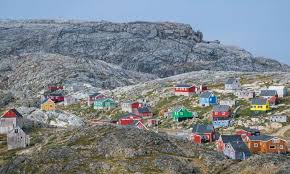Tuesday, November 2, 2021

According to a new research published in the Nature Communications journal, nearly 3.5 trillion tonnes of Greenland’s ice sheet that has melted over the past decade raising global sea levels by one centimetre and increasing the risks of floods across the world.
The international team of researchers used measurements from the European Space Agency (ESA)’s CryoSat-2 satellite mission, using estimates of surface elevation change over time. The researchers found that over the past four decades Greenland’s meltwater runoff has risen by 21 per cent and has become 60 per cent more erratic from one summer to the next.
The ice sheet atop the world’s largest island contains enough frozen water to lift oceans some six metres (20 feet) globally and the extreme melting events have increased in frequency for at least 40 years. The latest data provided by the European Space Agency showed that the ice sheet had lost 3.5 trillion tonnes of ice since 2011 producing enough water to raise oceans globally and put coastal communities at higher risk of flood events.
The research showed that one-third of the ice lost in the past decade came in just two hot summers in 2012 and 2019. The images showed significant annual variation in ice melt and combined with temperature data showed that heatwaves were increasingly a major cause of ice loss above and beyond global temperature rises.
It is reportedly difficult to predict how much Greenland’s melt will contribute to rising sea levels as scientists also need to factor in the potential rise caused by other land-based glacier melt. However, as oceans continue to warm it leads to expansion of water and contributes to higher seas.
Tags: floods, greenland, greenland tourism, ice melt
Thursday, April 25, 2024
Friday, April 26, 2024
Friday, April 26, 2024
Thursday, April 25, 2024
Thursday, April 25, 2024